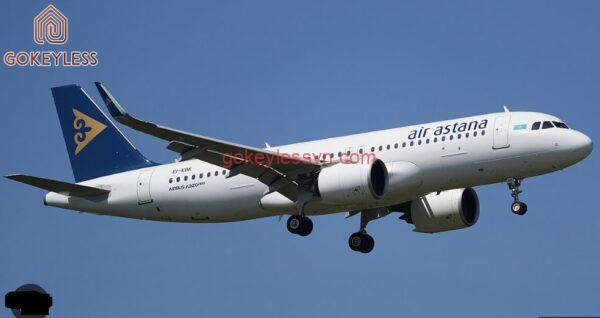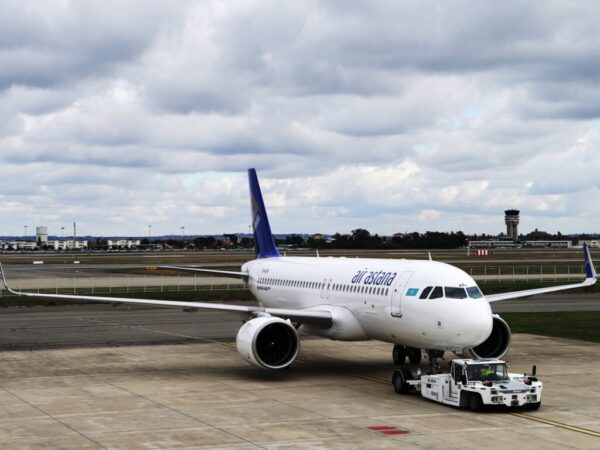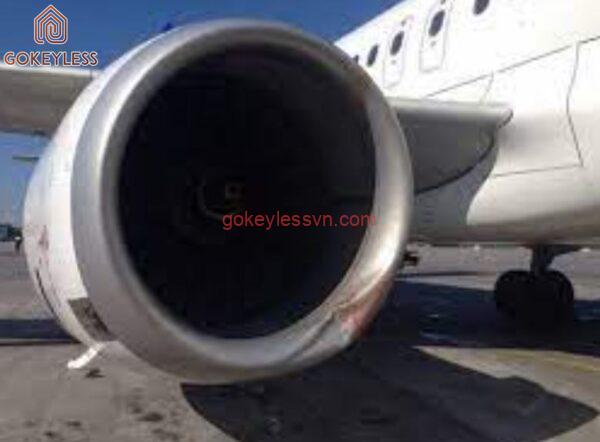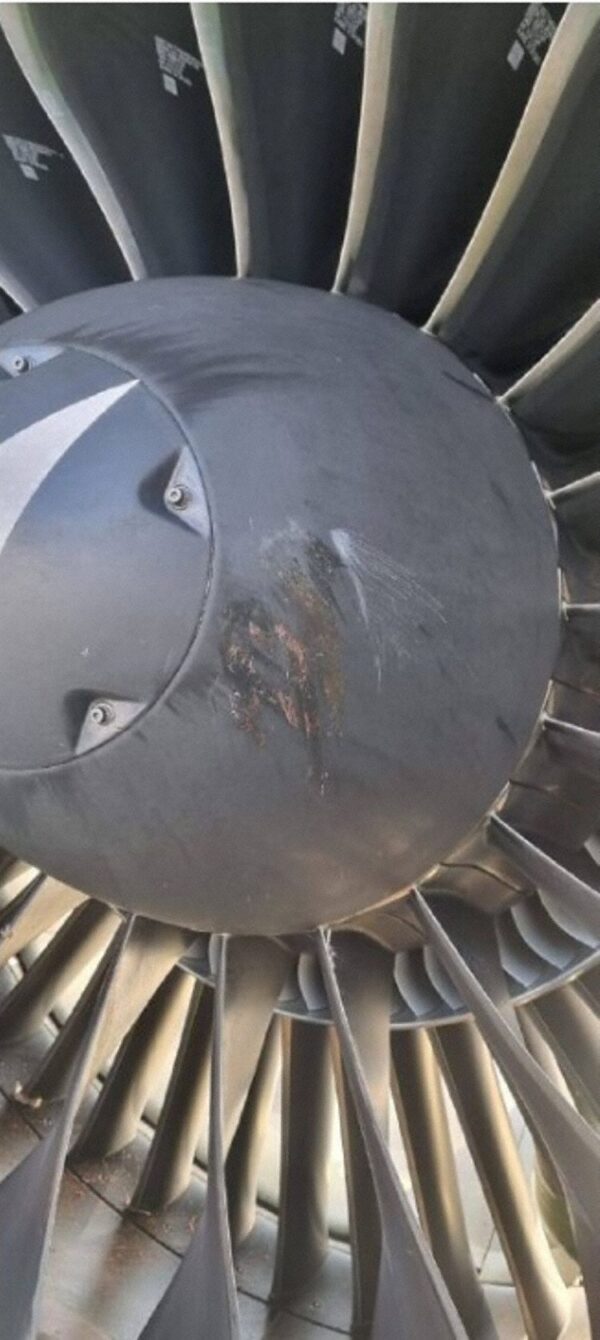Air Astana Engine Incident 2004 And 2015: Cctv Footage Analysis And Importance Of Aviation Safety

The Air Astana engine incident in 2004 and 2015, captured by CCTV footage, were critical malfunctions on Embraer E190 aircraft that raised concerns about aviation safety. These incidents involved maintenance errors that led to severe control issues, pushing the planes beyond their design limits. In this article from Inthanhlong.vn, we delve into the details of these incidents and explore the role of CCTV footage in understanding them. We also analyze media coverage, including Cockpit Voice Recorder transcripts and documentaries, to provide insights into the pilots’ decision-making process during these harrowing situations. In addition, we highlight the importance of meticulous maintenance practices and robust quality assurance to ensure aviation safety.

| Key Takeaways |
|---|
| 1. The Air Astana engine incidents in 2004 and 2015 involved critical malfunctions on Embraer E190 aircraft due to maintenance errors. |
| 2. CCTV footage played a significant role in investigating and understanding the incidents. |
| 3. Media coverage, including Cockpit Voice Recorder transcripts and documentaries, provided insights into the pilots’ decision-making process. |
| 4. The incidents highlighted the exceptional pilot skills, aircraft resilience, and alarming maintenance oversight. |
| 5. Meticulous maintenance practices and robust quality assurance are crucial for aviation safety. |
I. The Air Astana Engine Incident in 2004
Critical Malfunction and Maintenance Errors
The Air Astana engine incident in 2004 involved a critical malfunction on an Embraer E190 aircraft due to maintenance errors. After taking off from Lisbon, the crew discovered severe control issues with the aircraft. Investigations revealed that aileron cables were mistakenly installed in reverse during maintenance, causing the plane to respond oppositely to pilot inputs. This dangerous situation pushed the aircraft beyond its design limits, requiring exceptional pilot skill to handle the crisis. The incident highlighted the importance of meticulous maintenance practices and thorough quality control in the aviation industry.
Pilots’ Skill and Problem-Solving
The handling of the Air Astana engine incident in 2004 demonstrated the extraordinary skills and problem-solving abilities of the pilot. Faced with extreme maneuvers and a plane behaving unpredictably, the pilots were able to remain calm and assess the situation. They considered alternative options, including the possibility of an offshore ditching to avoid casualties. With quick thinking and precise decision-making, the pilots successfully landed the aircraft safely. This incident serves as a testament to the crucial role of well-trained and experienced pilots in ensuring the safety of passengers and crew.
II. The Air Astana Engine Incident in 2015
In 2015, the Air Astana engine incident shocked the aviation industry with its severe consequences. Due to maintenance errors, a critical malfunction occurred on an Embraer E190 aircraft shortly after taking off from Lisbon. The incident was primarily attributed to the mistaken installation of aileron cables in reverse, causing the plane to respond oppositely to pilot inputs. This led to severe control issues and forced the pilots to perform extreme maneuvers that pushed the aircraft beyond its design limits.
| Key Details | |
|---|---|
| Date of Incident | 2015 |
| Aircraft Type | Embraer E190 |
| Location | Lisbon, Portugal |
III. The Role of CCTV Footage
The Importance of CCTV Footage in Investigating Incidents
CCTV footage played a crucial role in investigating the Air Astana engine incidents of 2004 and 2015. The footage captured the maintenance work and provided crucial evidence to determine the cause of the malfunctions. In the case of the 2015 incident, the CCTV footage revealed that two technicians incorrectly connected the aileron cables while replacing a navigation indicator. This error, which went unnoticed in subsequent checks, led to the reversal of control systems. Without the CCTV footage, it would have been challenging to identify this critical maintenance oversight and understand how it contributed to the incidents.
Enhancing Understanding of Incident Details
CCTV footage not only helped in investigating the incidents but also served as a valuable tool in understanding the details of what happened. By analyzing the footage, s and investigators were able to recreate the sequence of events and identify the specific actions taken by the technicians. This visual reconstruction provided valuable insights into how the maintenance errors led to the control issues and ultimately the extreme maneuvers performed by the pilots. It allowed s and the aviation community to assess the severity and impact of the incidents, contributing to a better understanding of the factors involved and facilitating improvements in aviation safety protocols.
Supporting Analysis and Decision-Making Process
The availability of CCTV footage supported the analysis and decision-making process regarding the incidents. Cockpit Voice Recorder transcripts, combined with the visual evidence from the CCTV footage, allowed s to reconstruct the pilots’ decision-making during the crisis. This comprehensive approach provided valuable context for understanding the exceptional pilot skills demonstrated in handling the emergencies. It also enabled s to assess the effectiveness of the crew’s problem-solving abilities and the aircraft’s resilience in withstanding extreme conditions. The combination of audio and visual data from the incident allowed for thorough analysis and facilitated improvements in training, maintenance practices, and safety procedures.

IV. Media Coverage and Analysis of the Incidents
4.1 Cockpit Voice Recorder Transcripts: Insights into Decision-making Process
Cockpit Voice Recorder (CVR) transcripts from the Air Astana engine incidents provide valuable insights into the pilots’ decision-making process during the crisis. These transcripts capture the audio recordings of conversations and communications inside the cockpit, making them a crucial source for understanding the sequence of events and the actions taken by the pilots. Analyzing the CVR transcripts allows s to reconstruct the timeline of the incidents and examine the pilots’ responses to the severe control issues. The transcripts offer a firsthand account of the challenges faced by the flight crew and the remarkable skills they demonstrated in managing the emergency.
4.2 Documentaries: In-depth Analysis and Interviews
The Air Astana engine incidents have been the subject of documentaries produced by channels like National Geographic. These documentaries provide a comprehensive analysis of the incidents, featuring interviews with the pilots and aviation s. They delve into the details of the events, exploring the factors that led to the maintenance errors and the subsequent control issues. Through interviews, analysis, and reconstructed visuals, the documentaries offer a deeper understanding of the incidents, shedding light on the implications for aviation safety. They serve as educational resources, raising awareness about the importance of maintenance practices and quality control procedures.
4.3 Aviation Forums and YouTube Videos: Technical Analysis and Reconstructions
Aviation forums and YouTube videos have played a significant role in disseminating technical analyses and visual reconstructions of the Air Astana engine incidents. These online platforms allow aviation enthusiasts, s, and individuals interested in the field to share their insights and opinions. Users often engage in discussions regarding the maintenance errors, control issues, and the overall handling of the crisis. YouTube videos, in particular, provide visual reconstructions of the flight, demonstrating the challenges the pilots faced and the actions they took to ensure the safety of the passengers. Through these forums and videos, a wider audience gains access to detailed technical information and benefits from the collective knowledge and analysis of the incidents.
4.4 News Coverage and Online Articles: Spreading Awareness and Encouraging Discussion
The Air Astana engine incidents received extensive news coverage, both online and in traditional media outlets. News articles highlighted the alarming maintenance oversight that led to the reversal of control systems and the extraordinary pilot skills displayed during the crisis. These articles contributed to raising awareness about the importance of aviation safety and the need for meticulous maintenance practices. Additionally, online articles and opinion pieces encouraged discussions among readers, allowing them to share their perspectives, concerns, and suggestions regarding aviation maintenance and quality control procedures. The media coverage of the Air Astana engine incidents played a vital role in shedding light on the incidents’ details and stimulating conversations around improving safety measures in the aviation industry.

V. The Importance of Maintenance and Quality Assurance in Aviation Safety
Maintaining Aircraft Safety Standards
Strict adherence to maintenance procedures and regular inspections are crucial for maintaining aircraft safety standards. Proper maintenance ensures that all components are in optimal working condition, reducing the risk of critical malfunctions. Regular checks and servicing help identify potential issues before they escalate, allowing for timely repairs or replacements. By following maintenance protocols, airlines prioritize the safety of passengers and crew.
Implementing Robust Quality Assurance Systems
To enhance aviation safety, airlines and maintenance facilities must implement robust quality assurance systems. These systems involve comprehensive checks at various stages of maintenance, ensuring that all work is performed accurately and to the highest standards. Quality assurance processes cover everything from inspections and repairs to staff qualifications and training. By implementing strict quality assurance systems, airlines can minimize the possibility of maintenance errors and related incidents.
The Role of Data Analysis
Data analysis plays a critical role in identifying trends, patterns, and potential risks in maintenance procedures. By analyzing maintenance data, airlines can uncover any recurring issues or shortcomings in their safety protocols. This allows them to make informed decisions regarding procedural improvements and training requirements. Data analysis also helps identify areas where additional checks or preventative measures may be necessary. By leveraging data to drive maintenance decisions, airlines can continually improve their safety standards.
Continuous Training and Education
Continuous training and education are essential for all personnel involved in aviation maintenance. By staying updated with the latest industry standards, regulations, and best practices, maintenance technicians and engineers can better understand and mitigate potential safety risks. Ongoing training programs ensure that individuals are equipped with the necessary knowledge and skills to perform their roles effectively. By investing in training and education, airlines demonstrate their commitment to maintaining a high level of safety in the aviation industry.

VI. Air Astana 2004 Incident Engine CCTV Video Original
The Importance of CCTV Footage in Investigating the Incident
In 2004, the Air Astana engine incident occurred, resulting in a critical malfunction on an Embraer E190 aircraft. The incident was captured on CCTV footage, which played a crucial role in investigating and understanding the factors leading to the malfunction. The original CCTV video provided a visual reconstruction of the event, allowing s to analyze the sequence of events and identify the root cause of the incident. This footage offered valuable insights into the maintenance errors that occurred and the subsequent control issues faced by the crew.
The Significance of Preserving the Original CCTV Video
The preservation of the original CCTV video is of utmost importance in conducting a thorough investigation of the Air Astana 2004 incident. It serves as an invaluable piece of evidence that can be reviewed, analyzed, and scrutinized by aviation s, maintenance specialists, and regulatory authorities. The original video allows for detailed examination, frame by frame, to identify any potential contributing factors that may have been missed during the initial investigation. By preserving and referencing the original CCTV footage, the industry can learn from past incidents and implement enhanced safety measures to prevent similar occurrences in the future.

VII. Conclusion
The Air Astana engine incidents of 2004 and 2015 serve as reminders of the critical nature of aviation safety. These incidents were the result of maintenance errors that had severe consequences on the aircraft’s control systems. Through the analysis of CCTV footage, Cockpit Voice Recorder transcripts, and media coverage, we gain valuable insights into the pilots’ decision-making process and the challenges they faced. The exceptional skills displayed by the pilots in handling the crisis and the aircraft’s resilience highlight the importance of pilot training and aircraft design. Furthermore, the incidents underscore the need for meticulous maintenance practices and robust quality assurance procedures within the aviation industry. By prioritizing safety and implementing rigorous protocols, we can strive towards preventing similar incidents and ensuring the utmost safety for air travel.








